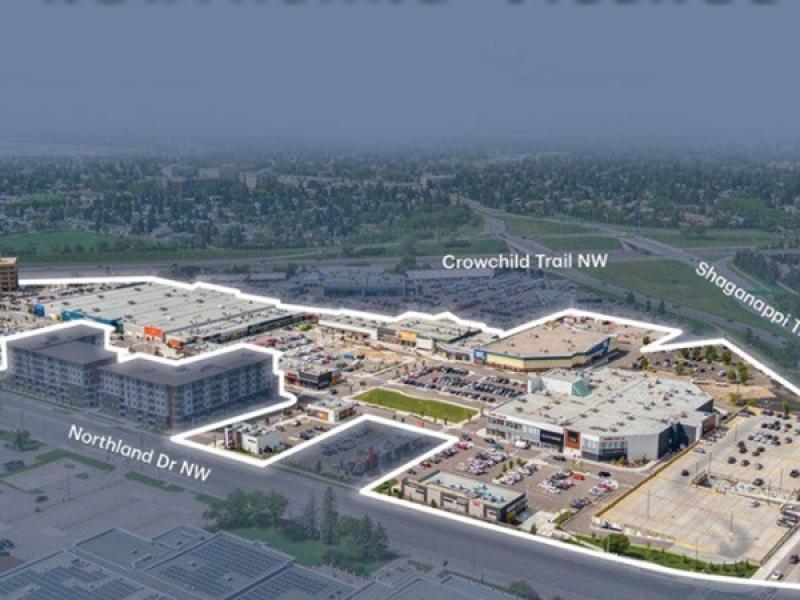
The newly approved Odayanhaway development in Ottawa’s west end will change the area’s skyline, but the innovative two-tower project also has the potential to change the way similar projects come together going forward.
“We've had lots of people reaching out with similar-type sites asking how they can apply this model, where they can actually have some revenue generation but also be delivering on their mission and values," said Rodney Wilts of Theia Partners, the developer for the project which will soon begin rising at 30 Cleary Ave.
“It’s really demonstrating that you can have your cake and eat it too. I think that's going to be the real lasting impact of this project.”
Theia Partners is an Ottawa-based developer best known for its involvement at the massive Zibi development straddling the Ottawa River in Ottawa and Gatineau. It developed the concept for the multi-phased, 34-acre community but has since sold its development stake to Dream Unlimited and related firms, which are now leading that project.
Odayanhaway, which means “little village” in Ojibwe, is a collaboration between Theia, the First Unitarian Congregation of Ottawa (FirstU), and Ontario Aboriginal Housing Services (OAHS). The development, which will sit just across the Kichi Zibi Mikan parkway from the south shore of the Ottawa River, will feature two distinct buildings.
The Odayanhaway development
The larger of the two buildings, which will be jointly owned by FirstU and Theia Partners, will stand 16 storeys and house 148 apartments. At least 80 per cent of the units are to meet the Canada Mortgage and Housing Corporation’s affordability criteria. It will also feature a rooftop amenity space with a workout facility and “dynamite views of the river, downtown and the sunset,” according to Wilts.
The smaller building will stand six storeys and feature 66 affordable units. The land the smaller building sits on has been donated by FirstU, as part of the church’s ongoing commitment to reconciliation. Owned and operated by OAHS, it will be designed to provide culturally appropriate housing for Indigenous people and families.
There will be range of floor plans available across the two buildings, from bachelor units to three bedrooms suitable for families.
“FirstU had hired an organization called Cahdco, which is a non-profit consultancy on affordable housing,” Wilts said, explaining how the project came together. “They were working with Cahdco to figure out ‘how do we fit these pieces together? How can you fit together the idea of wanting to do revenue generation, but also wanting to deliver on affordable, non-profit housing?’
"It was originally Cahdco that made the introduction between us and the church, and then collectively we brought in OAHS, because one of the areas where the church wanted to make an impact was reconciliation — not just affordable housing.
“Ninety-five per cent of development is just straight market development,” he added. “Five per cent or less is non-profit affordable housing. So to actually combine those two pieces in one project is an exciting model.”
Location near transit, amenities
In terms of location, the new development will have a lot going for it. It is situated near an LRT station, and within reach of plenty of shopping and entertainment options. Residents will also be able to access bike trails along the Ottawa River by way of a soon-to-be-constructed tunnel under the adjacent parkway.
“It's one of the very few places, actually, in the urban core area where you have a tunnel underneath the parkway,” Wilts said. “There's only a small handful of those, so in terms of people who want to have active lifestyles and want to get on a ski trail in the wintertime, or the walking or bike trail in the summer . . . that tunnel is under construction right now.
"We're really excited about that. Not only will you be able to see the river and the green space (from the development), but you can easily and safely access it. We feel really great about this location.”
Odayanhaway received the green light from Ottawa City Council in late October. Theia aims to break ground on the project as soon as summer of 2025, and hopes to have it completed by 2028.
“We're really excited to move into this next phase of development — to start working on the site plan and then moving into more detailed design work of the building,” Wilts said. “We can’t wait to get shovels in the ground.”
Model for future partnerships
While there’s still plenty of work to do before the project is completed and residents can move into their new homes, Wilts is confident it will go down as a success, both in terms of improving Ottawa’s Indigenous housing situation, and driving revenue for all the stakeholders.
“We feel really great that it's going to be a really solid, long-term investment,” Wilts said. “We're really appreciative to have such amazing partners on the project and can’t wait to get under construction and can't wait to find other opportunities to replicate this model.
“I think we're going to see a lot more churches, community groups — that kind of thing — that are real estate rich and cash poor looking at these kinds of models.”










